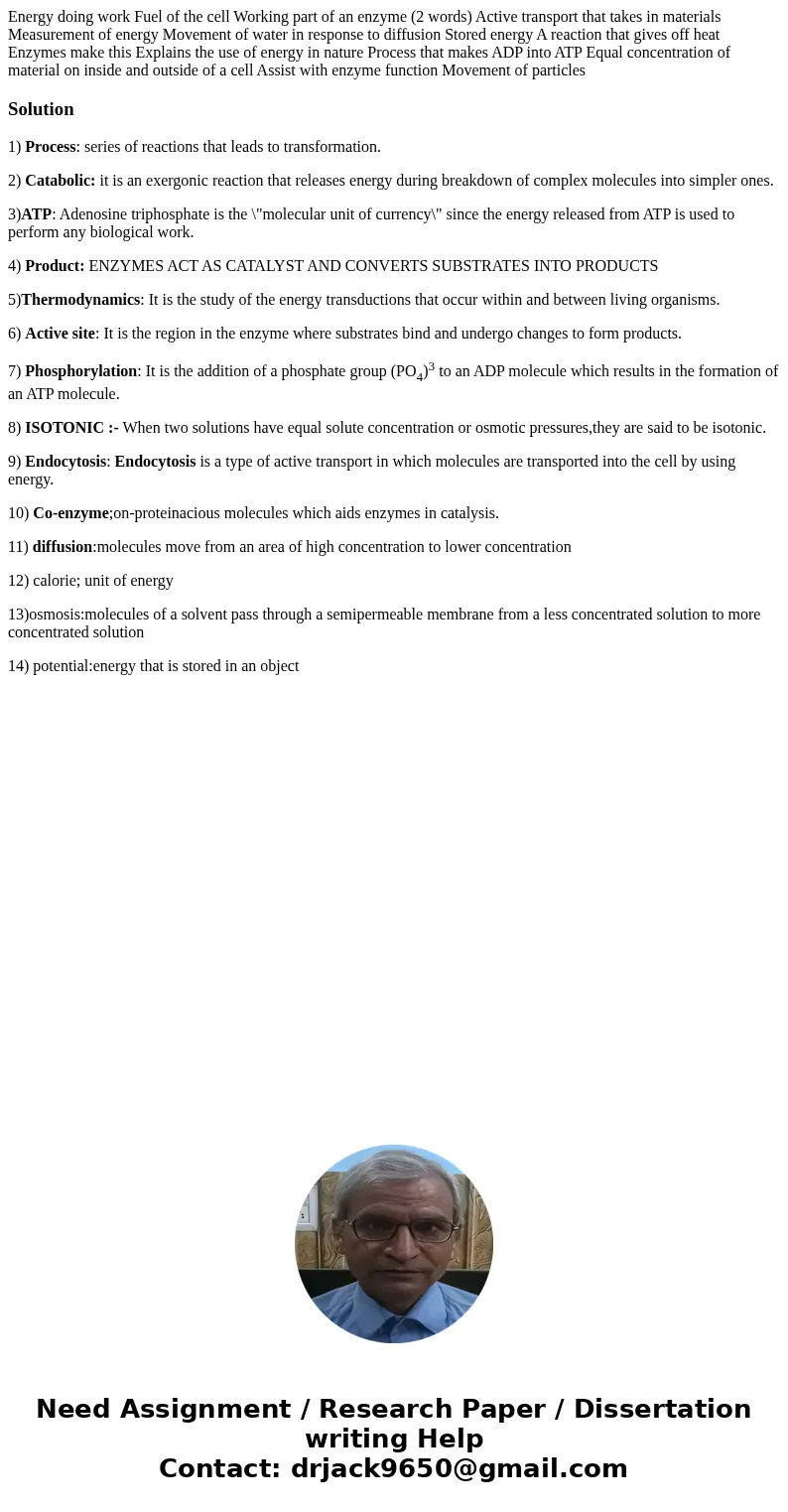Energy doing work Fuel of the cell Working part of an enzyme
Solution
1) Process: series of reactions that leads to transformation.
2) Catabolic: it is an exergonic reaction that releases energy during breakdown of complex molecules into simpler ones.
3)ATP: Adenosine triphosphate is the \"molecular unit of currency\" since the energy released from ATP is used to perform any biological work.
4) Product: ENZYMES ACT AS CATALYST AND CONVERTS SUBSTRATES INTO PRODUCTS
5)Thermodynamics: It is the study of the energy transductions that occur within and between living organisms.
6) Active site: It is the region in the enzyme where substrates bind and undergo changes to form products.
7) Phosphorylation: It is the addition of a phosphate group (PO4)3 to an ADP molecule which results in the formation of an ATP molecule.
8) ISOTONIC :- When two solutions have equal solute concentration or osmotic pressures,they are said to be isotonic.
9) Endocytosis: Endocytosis is a type of active transport in which molecules are transported into the cell by using energy.
10) Co-enzyme;on-proteinacious molecules which aids enzymes in catalysis.
11) diffusion:molecules move from an area of high concentration to lower concentration
12) calorie; unit of energy
13)osmosis:molecules of a solvent pass through a semipermeable membrane from a less concentrated solution to more concentrated solution
14) potential:energy that is stored in an object

 Homework Sourse
Homework Sourse